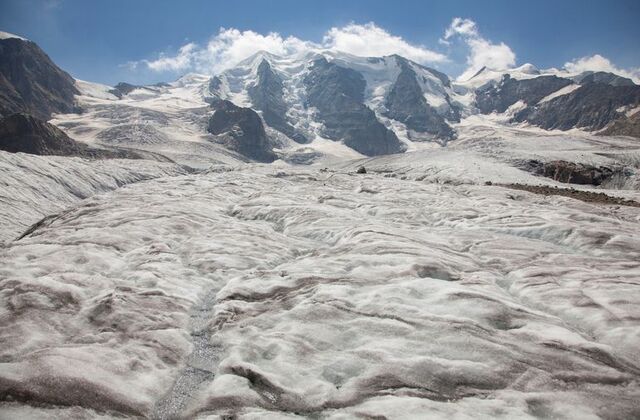| Translate This News In |
|---|
Andreas Linsbauer, a 45-year-old Swiss glaciologist, bounds over icy crevasses carrying 10 kg of steel necessary equipment to chart the decline of Switzerland’s glaciers.
Usually, he follows this route on the massive Morteratsch Glacier in late September, near the end of the Alps’ summer melt season. However, unusually high ice loss this year has forced him to visit this 15-square-kilometer (5.8-square-mile) ice amphitheater two months early for emergency maintenance.
The measurement system poles he uses to track changes in the depth of the pack are in danger of dislodging completely as the ice melts, necessitating the drilling of new holes.
The Alps’ glaciers are on track to lose the most mass in at least 60 years, according to data shared entirely with Reuters. Scientists can calculate how much a glacier has shrunk in a given year by comparing how much snow fell in the winter to how much ice melts in the summer.
Since last winter, when there was little snow, the Alps have experienced two major early summer heatwaves, including one in July that saw temperatures near 30 degrees Celsius (86 degrees Fahrenheit) in the Swiss mountain town of Zermatt.
During this heatwave, the altitude at which water froze reached a record high of 5,184 metres (17,000 feet) – higher than Mont Blanc – compared to the normal warmer months level of between 3,000 and 3,500 metres (9,800-11,500 feet).
“It’s very clear that this is an extreme season,” Linsbauer said, shouting over the roar of rushing melting ice as he measured the height of a pole protruding from the ice.
Meltdown in the Mountains
Climate change is causing most of the world’s mountain glaciers, remnants of the last ice age, to retreat. However, those in the European Alps are highly susceptible because they are smaller and have less ice cover.
Meanwhile, temperatures in the Alps are rising at a rate of around 0.3 degrees Celsius per decade, roughly twice as fast as the global average.
The Alps glaciers are supposed to lose more than 80% of their current mass by 2100 if greenhouse gas levels continue to rise. According to a 2019 report, many will disappear regardless of what emissions action is taken now, due to global warming baked in by past emissions.


















